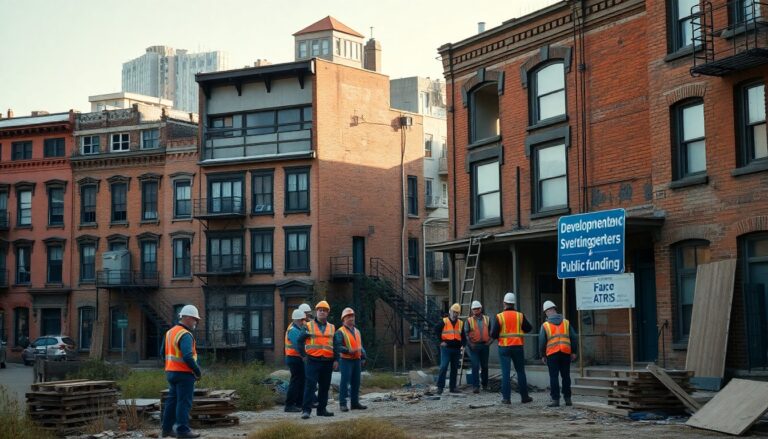As urban development evolves, it is essential to understand the expanding funding opportunities aimed at revitalizing properties in areas at risk of abandonment. Recent policy changes from provincial authorities have opened doors for individuals and investors, offering critical support for the recovery of residential buildings. This initiative serves not
only as a call to action but also as a strategic business case that aligns community regeneration with economic advantages.
Emerging sustainability trends in urban development
The movement toward sustainable urban development is gaining traction, with increased awareness that revitalizing at-risk neighborhoods contributes significantly to broader sustainability goals. By investing in these areas, we enhance the local economy and foster a more resilient living environment. The provincial government’s decision to extend financial
support for property recovery projects until December 31, 2025, underscores this trend.
From an ESG perspective, urban regeneration aligns with the principles of circular design and community involvement. This approach encourages a departure from traditional development models in favor of more integrated and sustainable practices. The available financial contributions can drive significant investment in neglected properties, fostering a sense of community and belonging.
Business case and economic opportunities
The
economic incentives are designed to support individuals with property rights who wish to restore buildings for primary residences or moderate-rent leasing. This creates a compelling business case for private investors and homeowners, as the provincial government offers a potential contribution of up to 20% of contractual costs, capped at €20,000. Such incentives motivate stakeholders to invest in urban regeneration, highlighting the favorable returns of sustainable practices.
Moreover, eligibility criteria stipulate that these properties must be designated for residential use, committed to this purpose for at least ten years. This long-term vision ensures that investments lead to lasting community benefits. By supporting both the internal and external recovery of buildings—through structural improvements and facility modernization—this initiative sets the stage for a thriving urban landscape.
Practical implementation strategies
To implement these funding opportunities effectively, a clear understanding of the application process and deadlines is crucial. Interested parties can submit applications through a designated online platform, with two submission windows: the first from May 19 to June 30, 2025, and the second from November 14 to December 31, 2025. Adhering to these deadlines is essential, as late submissions will be disqualified.
Each application must include digital identity verification and necessary declarations to comply with the program’s requirements. In cases where multiple applicants seek funding for the same property, it is vital for a single representative to submit the application on behalf of all parties involved. This streamlined process minimizes administrative burdens while enhancing stakeholder collaboration.
Examples of pioneering companies and future roadmap
We can draw inspiration from many pioneering companies that have integrated urban regeneration into their corporate sustainability strategies. These organizations recognize that investing in community development enhances brand reputation and contributes to a sustainable future. By aligning their objectives with local needs, they demonstrate that sustainability is a viable business case.
Looking ahead, the roadmap for urban regeneration must include ongoing assessment and refinement of funding opportunities. Stakeholders should advocate for policies that support sustainable practices while ensuring transparency in resource allocation. By fostering collaboration between public and private sectors, we can cultivate an environment where urban regeneration flourishes, ultimately leading to vibrant, sustainable communities.

